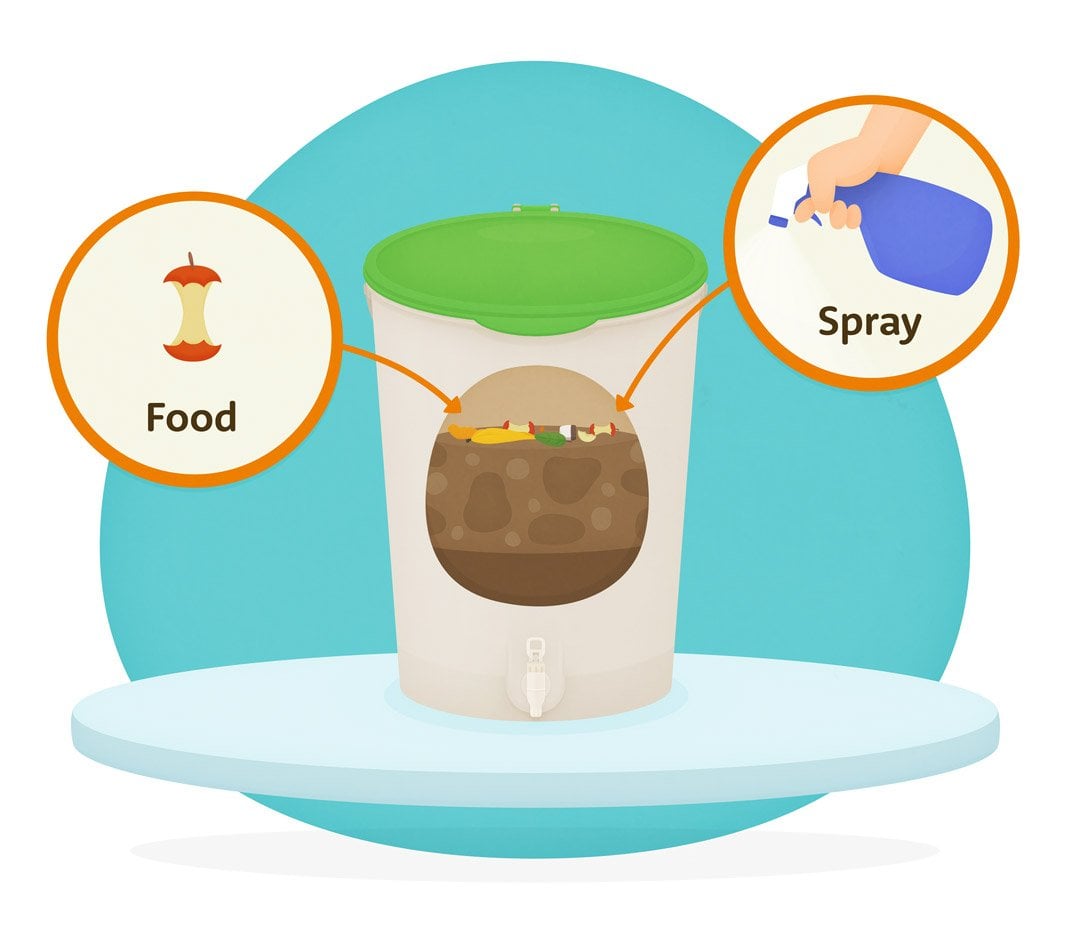Choose your tutorial
Composting, worm farming and bokashi fermentation are the 3 most popular ways to recycle your food scraps into healthy soil and fertiliser. Choose which suits you best depending on your household and garden situation.

Works by accelerating nature’s natural process of breaking down organic waste into a rich nourishing compost, teeming with life and a supercharger for your garden.
Composting systems recycle all types of organic waste including food, paper, cardboard and garden materials. This makes them perfect for larger households.
Open-bottom units need to be placed on soil. As the scraps break down nutrient-rich liquid will disperse into the surrounding soil. After ~6 months compost can be harvested from the bottom.
Do the tutorial

Works with the help of wriggly warriors who chew through your food scraps, producing nutrient-rich worm castings and liquid fertiliser.
Worm farms recycle fruit and vegetables scraps, excluding citrus, onion, garlic and chilli.
The units can be placed indoors or outdoors, in a sheltered location out of the wind, rain and direct sunlight.
With a little tender loving care, worms will chew through your food scraps to produce nutrient-rich worm castings which can be harvested every 2-6 months. Liquid fertiliser also flows out of the farm on a regular basis, which can be diluted 10 to 1 with water to create free organic fertiliser for your garden.
Choose from the Farm, our compact, stylish award-winning worm farm made here by the Compost Revolution in Melbourne, Australia, or the large capacity Hungry Bin, made in New Zealand and ready to much through 2L of good a day!
Do the tutorial

A special culture of beneficial, naturally occurring microorganisms (EM) ferment food waste in anaerobic conditions, producing liquid fertiliser and fermented scraps.
Bokashi systems ferment all types of food waste (including meat, dairy, bread and small bones). The unit can be placed indoors or outdoors, in a cool location.
Food waste is added then mashed down to remove air pockets, followed by a spray of enzyme or handful of enzyme grain. Effective microorganisms (EM) then ferment food waste in anaerobic conditions.
Liquid fertiliser needs to be tapped every few days. Once the unit is full, the scraps are left to ferment for 1-2 weeks before being added to a compost bin or buried in soil. Fermented scraps will break down in 2-3 weeks in the soil delivering rich nutrients to surrounding plants.
Do the tutorial
All Tutorials
Compost bins accelerate nature's nutrient reycling using heat created within above ground chambers or rotating tumblers.
- Processes lots of food scraps plus garden waste.
- Place above ground units on open soil. Tumblers go anywhere including balconies.
- Low maintenance.
Produces rich compost for your garden (Tumblers produce liquid fertiliser also).
See benefits
Hungry worms break down food scraps into solid and liquid nutrients in compact multi-tray and larger single tray farms.
- Processes medium amounts of food scraps, primarily fruit and vegetables.
- Suitable for indoor as well as outdoor placement.
- A bit more maintenance.
Produces rich harvestable worm castings as well as lots of liquid fertiliser for your garden.
See benefits
Bokashi uses anaerobic bacteria to ferment food waste into a readily decomposable ferment in a sealed kitchen bench bin.
- Ferments medium amounts of food scraps, all kinds!
- Suitable for kitchen or outdoor placement.
- Low maintenance, except when emptying.
Produces fermented food scraps (you then bury in soil) and lots of liquid for use as fertiliser for your garden, or a probiotic all purpose cleaner.
See benefits








